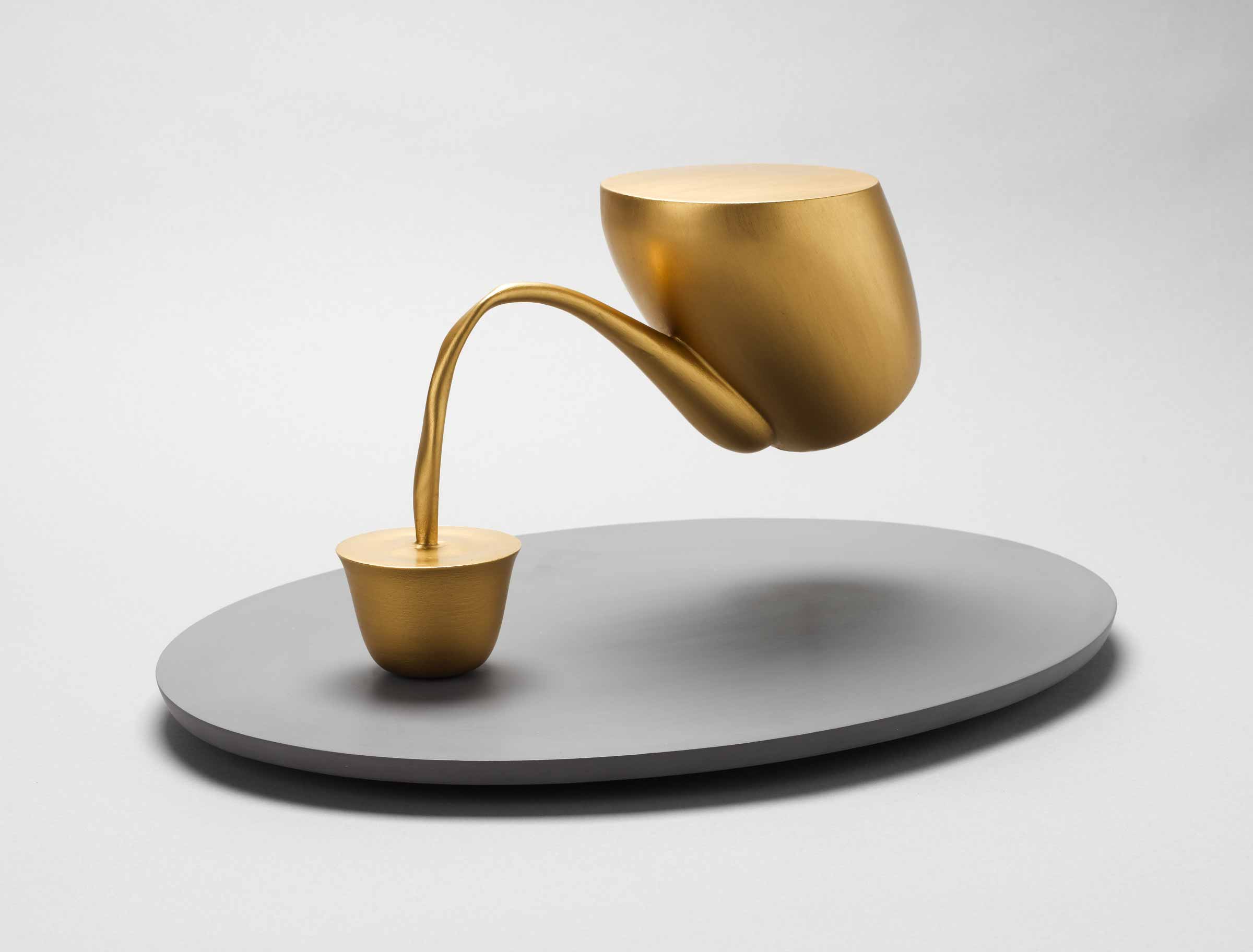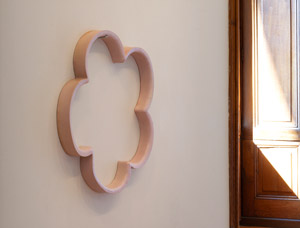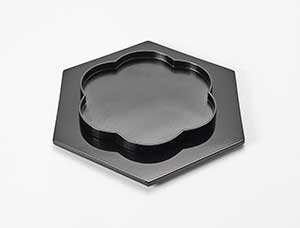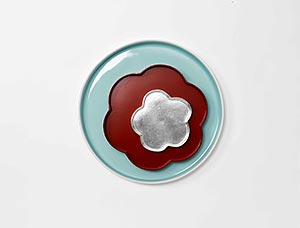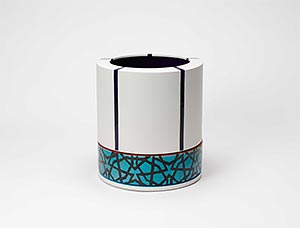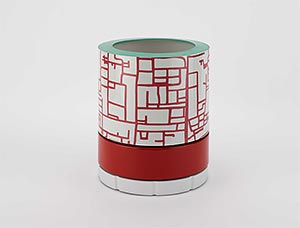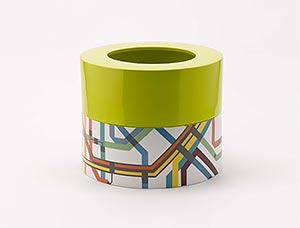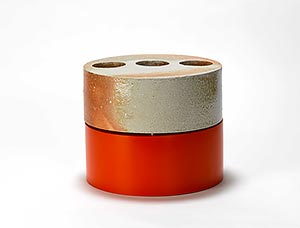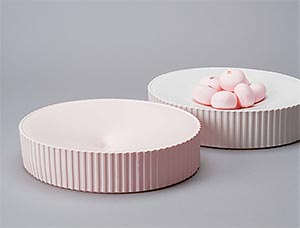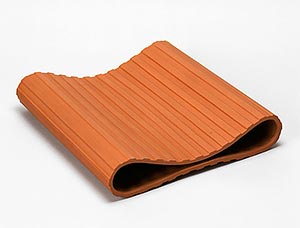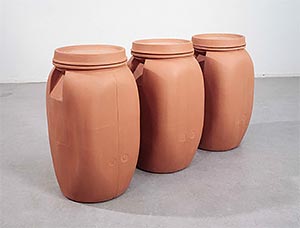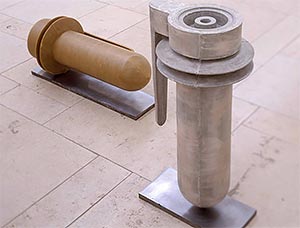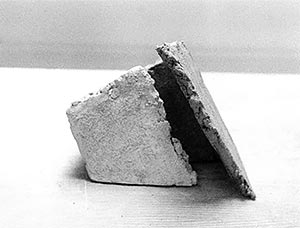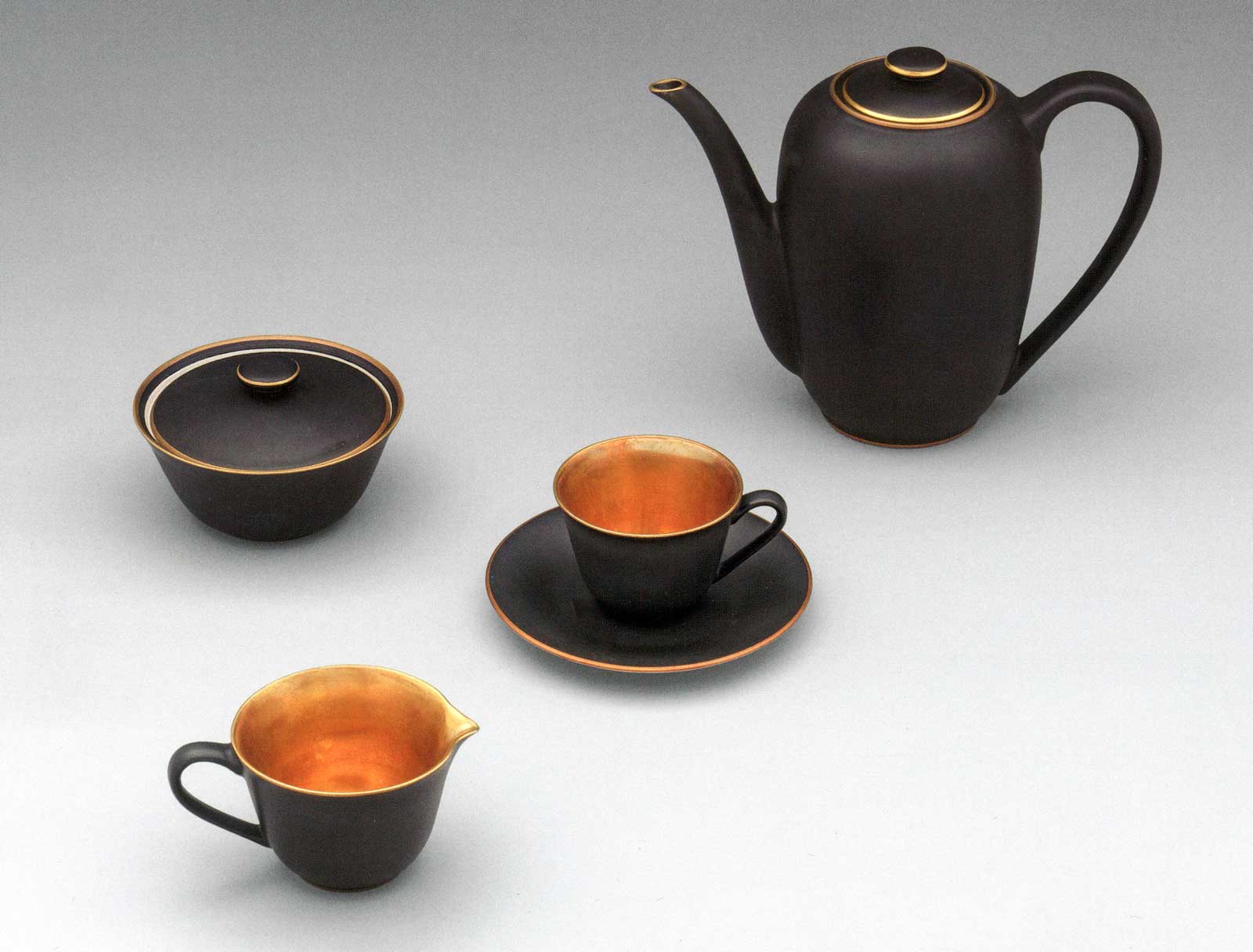
Collection Musée Ariana, Genève, photo Mauro Magliani & Barbara Piovan
Langenthal revisité | 2012
Dans le cadre de l’exposition: « La manufacture de porcelaine de Langenthal, entre design industriel et vaisselle du dimanche », le Musée Ariana a proposé à cinq céramistes de renom: Margareta Daepp, Magdalena Gerber, Müller-B, Michèle Rochat et Paul Scott de porter leur regard de plasticien sur l’histoire, la création artistique ou l’avenir de l’unique manufacture de porcelaine industrielle de Suisse du 20e siècle.
Créées pour l’occasion ou reprises sous un angle nouveau, les propositions inédites des céramistes jettent un pont entre design industriel et création céramique, dans un dialogue riche empreint de nostalgie, de critique, de pertinence et de dérision.
A mi-chemin de l’évolution du style et du design dans la porcelaine de Langenthal, entre Art Nouveau et postmodernisme, Margareta Daepp s’est arrêtée sur la forme moderne, esthétique et fonctionnelle de la cafetière du service Landi, créé en 1939. Le rituel social et convivial du café odorant qui s’échappe dans une trajectoire idéale de la cafetière pour remplir la tasse a disparu, définitivement supplanté par la machine à café. Le contenant désuet s’est comme évaporé, ne reste de ce moment privilégié que le contenu, figé et comme sacralisé, qui devient à son tour objet.
Anne-Claire Schumacher,
Conservatrice, Musée Ariana
Photo:
Collection Musée Ariana, Genève, photo Mauro Magliani & Barbara Piovan
A moment suspended in time
Design forms and decoration tell us a lot about the specific culture, epoch and zeitgeist of an artefact. When we look at the twentieth century, we can trace the changes from art nouveau to post modern across the decades. During this period the porcelain manufacturer Langenthal Suisse helped change the history of Swiss porcelain.
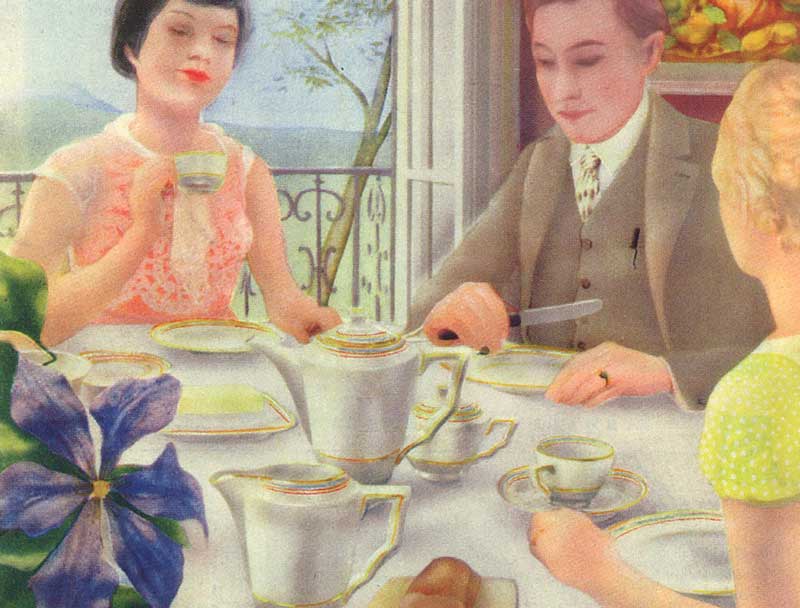
The elegant, good solid dinner service with gold rim, the Sunday best, saw its heyday in the 1940s and ’50s and fitted the spirit of the times. The dinner service «Landi» from 1939 stands for Modernism, for beautiful shape, for aesthetic and functionality. While initially the service was manufactured in a pure ivory-coloured porcelain, in later years it was varied with different decorations. Like the gold rimmed mocha service from 1945 or the matt black glazed service with its cups gilded inside from 1949.
But what about the actual content?
Coffee remains a pleasure for us, but its preparation and accompanying rituals have changed. Today every Swiss household has an espresso machine and the mocha pot has become obsolete. And that one day we would drink our coffee while out and about from paper cups was quite unthinkable a few decades ago.
My idea employs aesthetic means to reflect on a cultural, social and formal moment in the 1940s. It sets a complex, three-dimensional monument to the typical gesture of serving which tells of gender-specific behaviour, family customs, new fashions and affordable luxury. A gesture, too, which produces a fine coffee aroma that sharpens the senses and heightens the joyful anticipation of that first sip.
Margareta Daepp
